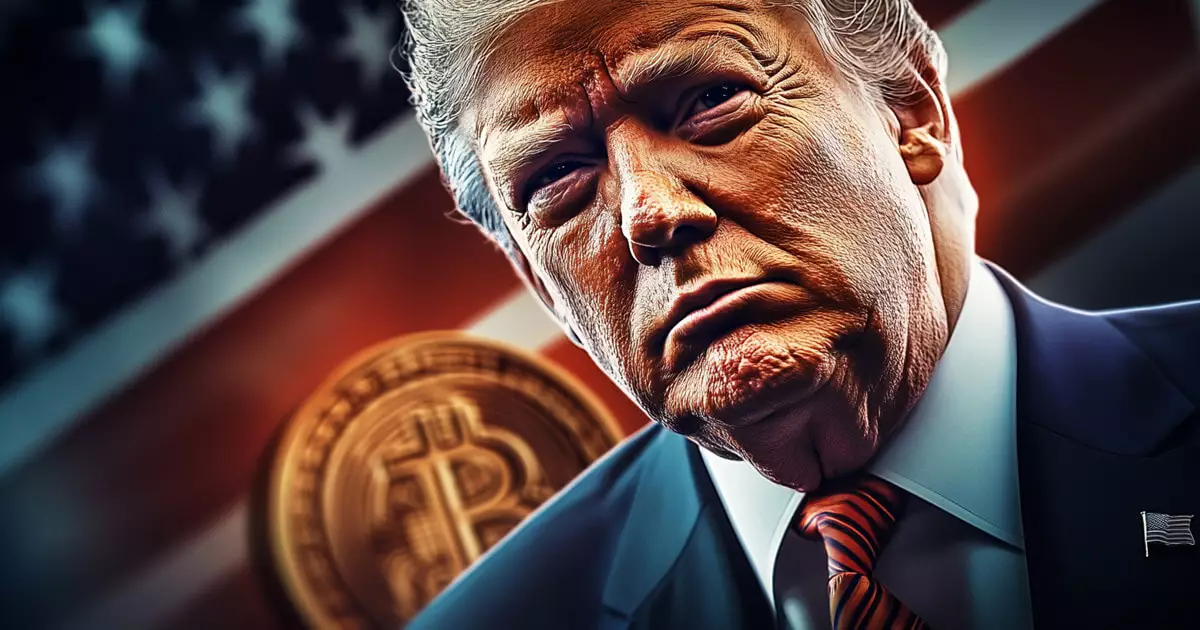In light of the rapidly changing dynamics within the cryptocurrency sector, the Trump administration appears to be reconsidering its initial plans for a formal crypto council. Reports indicate that the focus may shift towards holding a series of informal summits with a rotating selection of industry leaders, rather than establishing a consistent governing body. This pivot, aimed at fostering more engaging discussions, aligns with the need for flexibility in a crypto space often marred by ideological divides and competing interests.
The proposed summits are expected to tackle various pertinent subjects, including banking regulations, payment systems, data center operations, and the intricate world of Bitcoin (BTC) mining. As the administration seeks to actively involve trade associations in shaping the agenda, questions arise about the potential effectiveness of informal meetings compared to a structured council format. The precise schedule and number of these proposed summits remain ambiguous, leading to varied responses from industry stakeholders.
One of the primary factors influencing this shift in strategy is the considerable fragmentation within the cryptocurrency industry. This fragmentation is evident in the schisms between centralized and decentralized projects, the clash between Bitcoin advocates and proponents of alternative coins, as well as tensions surrounding the relationship between cryptocurrency and traditional finance. Such dividing lines complicate potential policy frameworks, making it challenging to establish a unified front.
For the Trump administration, the pursuit of informal summits might serve as a tactical maneuver designed to preemptively manage these internal conflicts. Some industry insiders recognize the potential benefits of cultivating a diverse dialogue among different groups within the crypto sector. By involving leaders from exchanges, miners, and wallet providers in discussions relevant to their specialties, the administration has the opportunity to gather comprehensive insights that could inform policy decisions.
Conversely, skepticism looms over the efficacy of these summits. Critics argue that they could function merely as a way for the administration to avoid deep-seated conflicts rather than foster genuine advancements in policy-making. There are concerns that these gatherings may turn into platforms for surface-level discussions rather than concrete actions that penetrate the complexities of the crypto landscape.
Underlying the shifts in strategy are concerns regarding the true motivations behind the administration’s approach to cryptocurrency. Allegations have emerged implying that Trump’s interest in engaging with crypto leaders may be less about advancing regulatory initiatives and more about personal financial interests. His recent ventures into the world of memecoins and involvement in decentralized finance initiatives have raised eyebrows among industry veterans.
Critics suggest that this newfound enthusiasm for summits may serve as a mechanism for Trump to glean information that could directly benefit his business pursuits. Such perceptions, if widespread, could undermine trust between the administration and the crypto community, complicating any efforts to create a supportive regulatory environment.
While Trump initially promised collaboration with industry leaders through a formal council aimed at fortifying regulatory frameworks, doubts about the sincerity of these efforts have now emerged. The executive order issued by Trump establishing the “Presidential Working Group on Digital Asset Markets” emphasized expectations for regulatory revisions and the creation of a digital asset stockpile centered around Bitcoin. However, as the initial vision for a council fades, the crypto community is left questioning the commitment to a robust, well-governed policy agenda.
Despite the uncertainty surrounding the administration’s transition to informal summits, there remains ample opportunity for meaningful conversations around cryptocurrency policy. Engaging a diverse array of stakeholders provides a platform for addressing concerns directly from the industry. Ultimately, the success of this new format will depend on the administration’s ability to prioritize authentic dialogue over superficial engagements.
As stakeholders prepare for these upcoming discussions, balancing personal ambitions with the overarching goal of supporting innovation in the cryptocurrency space will be crucial. The ongoing evolution of crypto governance under the Trump administration could either lead to constructive regulatory frameworks or further entrench the divisions that currently plague the industry. The outcome will certainly resonate beyond policy circles, impacting the broader financial landscape and the future of digital assets altogether.

